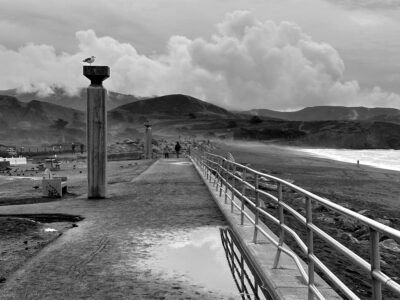A blue day for bluefin

Negotiators at the meeting in Qatar of the parties to the Convention on International Trade in Endangered Species have rejected proposals to ban international trade in Atlantic bluefin tuna (and in polar bears). (See coverage in the New York Times and Washington Post.)
The vote on the bluefin ban was surprisingly lopsided — only 20 nations in favor, 68 opposed, and 30 abstentions. The United States was the main advocate for the ban, although the proposal was formally introduced by Monaco. The European Union, which had sounded like it would support a ban, waffled a bit, proposing a ban in 2011 if other measures didn’t help.
Japan, which consumes the bulk of the world’s bluefin harvest, led the opposition. It appears that the heavy no vote was essentially a referendum on whether CITES should have a role in regulating commercial fisheries, or perhaps more broadly whether it should have a role in protecting marine species.
It’s certainly understandable that fishing nations want to look first to specific international fishing agreements to regulate harvest of and trade in those species. Atlantic tuna harvest, for example, is already governed by the International Commission for the Conservation of Atlantic Tunas (ICCAT). CITES should not unnecessarily duplicate the work of fisheries management conventions. But that’s not what was proposed here. ICCAT has had its shot at bluefin conservation and, in the view of most fishery scientists, has failed miserably. Even ICCAT agrees, in its most recent assessment of bluefin status, that the species is badly overfished:
The assessment results indicated that the spawning stock biomass (SSB) has been declining rapidly in the last several years while fishing mortality (F) has been increasing rapidly, especially for large bluefin. . . .
Estimates of current stock status relative to MSY [maximum sustained yield] benchmarks are uncertain, but lead to the conclusion that recent F was too high and recent SSB too low to be consistent with the Convention Objectives. Depending on different assumed levels of resource productivity current F was most likely at least 3 times that which would result in MSY and SSB was most likely to be about 36% or less than the level needed to support MSY. Even in the most optimistic evaluation of the Committee, assuming recruitment will not decrease if SSB continues to decline, substantial overfishing was occurring and spawning biomass was well below levels needed to sustain MSY.
In this situation, when a fishery management agreement is presiding over a stock collapse it is unable or unwilling to arrest, CITES is badly needed as a backstop. Knowing that a total ban on trade could follow from management failure would give ICCAT a real incentive to control the fishery. Without that backstop, it seems likely that the bluefin will simply continue to be “managed” into extinction.
Reader Comments
2 Replies to “A blue day for bluefin”
Comments are closed.







Not sure if this matters or is a good idea but: Blue fin are currently captured as “footballs” and reared in grow-out pens located east of the Coronados Isles. You can see the round net pens in google earth. Not sure if this is a commerically viable way to satisfy world demand but this may be a better compromise than the all or nothing approach. Soveriegn’s could allow capture and grow out of these smaller fish while letting the largest and highest reproducing fish remain unharmed. If you look at fish growth curves the largest growth velocities occur during the first few years of life. Also one could avoid any biomagnification or contamination issues by harvesting younger fish and testing the feedstock.
Thanks for the comment. As long as tuna “ranching” depends on capture from the wild, it’s not going to reduce pressure on the wild populations. Quite the contrary. Fishing pressure seems to have increased steeply in parallel with the growth of ranching operations. Perhaps a more sustainable option is farm-raising tuna from birth in a closed system. That’s obviously far more expensive than ranching, but bluefin fetches a high enough price in Japan to justify it. And at least one Japanese university is currently doing closed-system bluefin farming successfully: http://www.cnn.com/2010/TECH/science/01/20/eco.bluefin.tuna/index.html